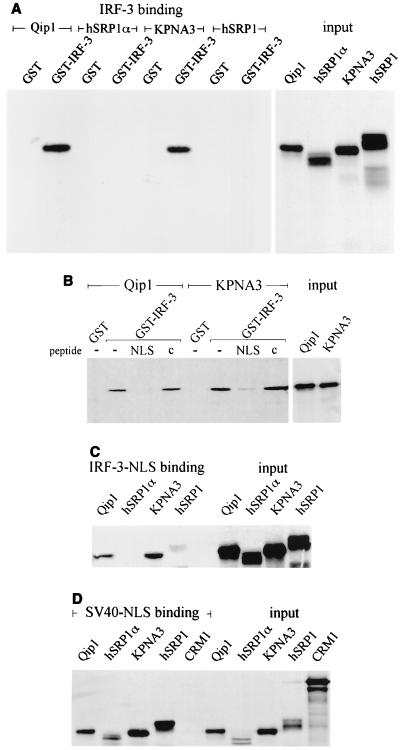FIG. 6.
IRF-3 is recognized by specific importin-α proteins. (A) Importin-α proteins were synthesized in vitro in the presence of [35S]methionine (relative input shown on right). The importins were incubated with bacterially expressed GST or GST–IRF-3 protein bound to glutathionine beads. (B) Binding of IRF-3 to importin-α receptors is NLS specific. Qip-1 and KPNA-3 were translated in vitro (relative input on right) and were incubated with GST–IRF-3 in the absence of competitive peptide (−) or in the presence of the SV40 NLS peptide (NLS) or in the presence of a control peptide (c). (C) The NLS sequence of IRF-3 is responsible for binding to Qip-1 and KPNA-3. The importin-α receptors were translated in vitro (relative input on right) and were incubated with the IRF-3 NLS peptide cross-linked to agarose beads. (D) All the importin-α receptors tested can bind to the SV40 NLS. The importin-α receptors and the exportin CRM1 were translated in vitro (relative input on right) and were incubated with the SV40 NLS peptide cross-linked to agarose beads.

